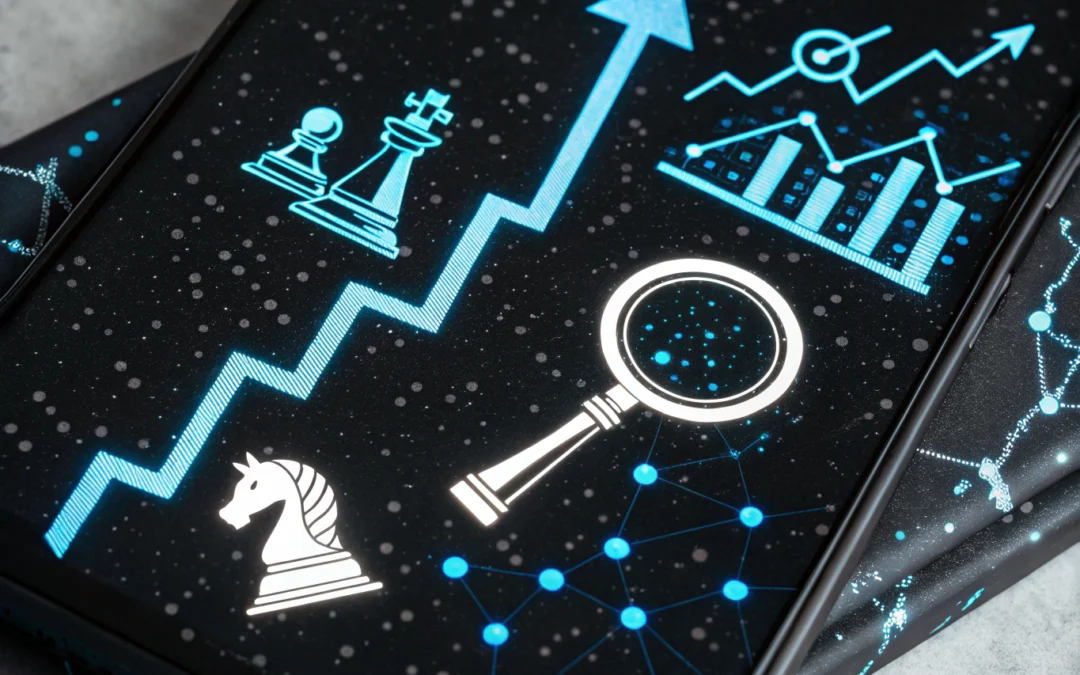The Art of Competitive Intelligence: Navigating the AI-Driven Marketplace
In the realm of commerce, where businesses jostle for attention like eager participants in a cosmic dance-off, the ability to anticipate your competitor’s next move can be akin to holding the ultimate trump card. This is where competitive intelligence comes into play. It’s not just about spying on your competitors but understanding the market landscape with the precision of a chess grandmaster planning ten moves ahead.
What Exactly is Competitive Intelligence?
Imagine having a crystal ball that offers insights into your competitor’s product launches, marketing strategies, and customer sentiment. While such a device remains within the realms of sci-fi, competitive intelligence is the closest we can get. It involves gathering, analyzing, and applying information about competitors and the market to make strategic decisions. But here’s the kicker—it’s not about espionage; it’s about being smart with publicly available data, like Sherlock Holmes piecing together clues from a crime scene. For more on strategic growth, check out our insights on Retail Pricing Optimization: Boost Strategy & Growth – Dotties Biz.
AI’s Role in Competitive Intelligence
AI, much like the trusty intern, has some serious potential here. It can sift through mountains of data, uncovering patterns and trends that would take humans eons to unearth. Think of AI as having an army of tireless analysts, combing through digital footprints to provide you with actionable insights. Just as an intern might surprise you with a brilliant idea, AI can offer unexpected revelations about market shifts or emerging consumer preferences.
Challenges and Misunderstandings
Yet, there’s often a disconnect between the promise of AI in competitive intelligence and its practical application. Expecting AI to operate flawlessly without human oversight is like expecting your intern to run the company while you’re sunning in the Bahamas. AI needs guidance, supervision, and, most importantly, a human touch to interpret its findings. Businesses often trip up by expecting AI to be an all-knowing oracle, forgetting that it’s still learning, just like any new team member.
The Human Element
Let’s face it, humans have a knack for misunderstanding technology. We imbue it with qualities it doesn’t possess, expecting AI to act with the wisdom and foresight of a seasoned CEO. But in reality, AI’s strength lies in its ability to handle the grunt work, leaving humans to make nuanced decisions. Competitive intelligence is most effective when AI and human expertise walk hand in hand, each complementing the other’s strengths.
Actionable Recommendations for Businesses
So, how can businesses harness the power of AI-driven competitive intelligence effectively? Here are some practical steps:
- Invest in AI tools that suit your business needs, but don’t expect them to be a magic bullet. Pair them with human insight for the best results.
- Train your team to interpret AI-generated data. Understanding the limitations and possibilities of AI is crucial to making informed decisions.
- Regularly update your competitive intelligence strategies. The market is dynamic, and your approach should be too. For more insights, take a look at Page 2 of 38 – Dotties Biz for additional resources.
- Focus on ethical data use. Trust is a currency as valuable as any, so ensure your competitive intelligence practices are above board.
In conclusion, competitive intelligence is not about outsmarting your rivals with clandestine tactics, but about being smarter with the information at your disposal. With AI as your ally, and a human at the helm, the possibilities are both exciting and endless.
Checkout ProductScope AI’s Studio (and get 200 free studio credits)

